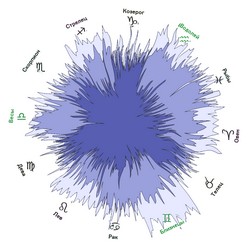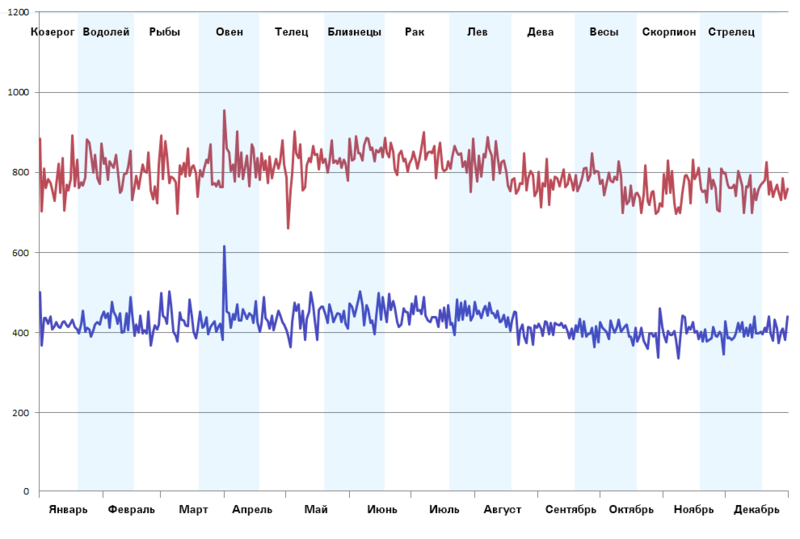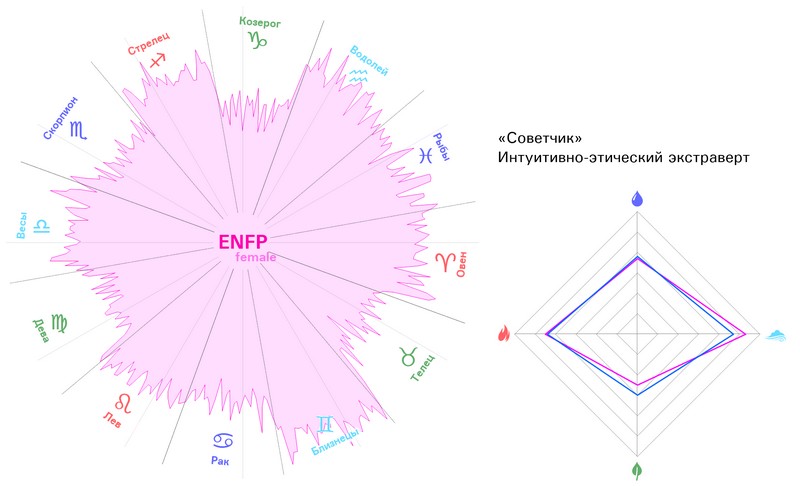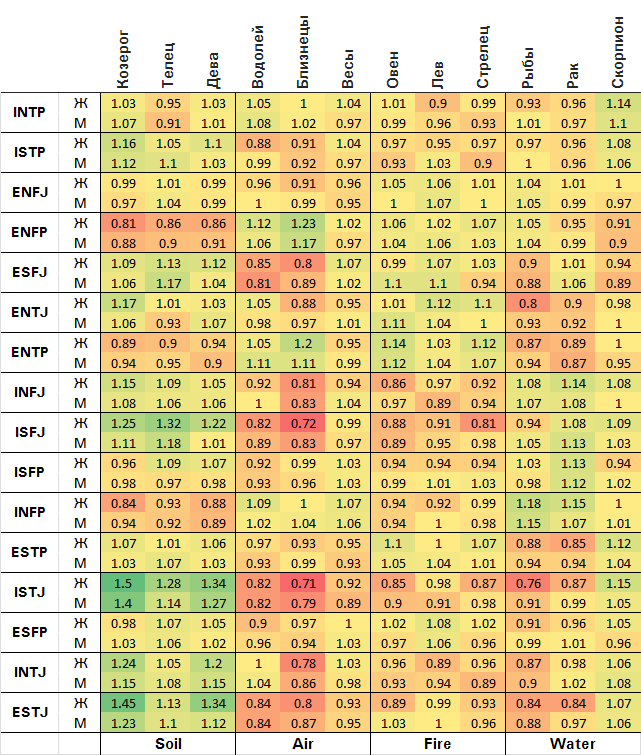Astrology and Data Mining

Like many technical people, I am extremely suspicious of astrology , horoscopes and other pseudo-sciences. My worldview was shaken when I, out of boredom, decided to study the influence of the time of year in which a person is born, on his mental features. The assessment of mental features was made according to the results of the socionic test from the VK application, which has more than 500,000 users. The reliability and validity of the test is small, and the whole socionic model has a number of problems. But what is important to us is another thing: to understand whether there are at least some differences between people born at different times. The sample size of half a million people allows us to hope for a positive result. During the study, it was expected to obtain a linear relationship between the duration of daylight hours on a person’s birthday and his psycho-type, but it turned out something completely different.
Briefly about the test: there is such a thing Jung's basis , it represents 4 binary signs, all possible combinations of which form 16 psycho-types of personality. Consider the number of one of the types in the context of the date of birth and immediately impose periods of zodiac signs.

')
For comparison, the total distribution of all types for both sexes.

It seems that the ups and downs of fertility are not accidental. Perhaps the authors of the application falsified test results? This would be the simplest explanation, despite the fact that I have little idea how it is technically possible and why it is needed.
This is the distribution of birth rates for all types:

Interestingly, the ups and downs, as a rule, are observed simultaneously for signs from one element.
Several interesting charts imposed on the zodiac circle:

ENTP ISFJ INFP ISTJ ESTJ
The right of the diagrams shows the elemental balance for each psychotype broken down into both sexes.
Connoisseurs of astrology and socionics can estimate how much a possible correlation fits into the theory, looking at the balance of the elements in the Jung basis and the table of deviations from normal values:

A normal value means the most statistically probable number of people who should have been born under each sign in the absence of any correlations.
The coefficients are calculated by the formula:

Where,
count - the number of people with a given type, gender and sign;
count total - the total number of people in the sample;
count (zodiac) - the total number of people with a given sign;
count (sex, type) - the total number of people with a given type and gender.
For example, Capricorn type ISTJ women are found in 1.5 more often than if the type and sign were not related to each other. Twins with type ISTJ are found at 29% less.
Due to the unreliability of the data source, the foregoing does not pretend to be called a serious scientific study, so I will not go into the details of statistical data processing. Anyone can repeat it using the attached files or repeat the parsing from the source.
socio_dump.zip
socio.xlsx
corr_map.xlsx
Ruby, Oracle XE, Tableau Desktop, Excel and Paint.NET were used to collect, process and visualize information.
Total
Wikipedia says:
From the point of view of modern science, astrology is a typical pseudoscience and a kind of fortune telling.
Not a single experiment aimed at verifying the truth of the statements of astrology was unsuccessful. All efforts to establish reliable statistical correlations between the location of the celestial bodies at the time of birth of a person and any features of his personality or events in life have not yet given a positive result.
Of course, Wikipedia is more authoritative for me than the app from the contact. However, from the point of view of biology and anthropology, I see no reason why the human phenotype cannot depend on the time of year of birth, like in some animals. If we assume that the correlation really exists, then the following explanation appears: some peculiarities of the human psychotype are formed in the process of intrauterine development under the influence of annual hormonal cycles in the mother's body and are the result of adaptation to different types of seasonal activity of people in antiquity. Children who were born under different conditions needed to be prepared for these conditions in advance. In this case, it is logical to assume that the nature of the annual dynamics of fertility will depend on the ethnic composition of the population in which the study is being conducted, since different nations probably lived according to their calendar. As far as I know, such studies with such a sample size have never been conducted in Russia. Perhaps, American sociologists and supporters of the MBTI typology could not find patterns precisely because of the mixed composition of their audience.
PS I do not want to convince anyone of anything, and I apologize if someone's atheistic feelings have touched :)
UPD
Official comment of the owner of the Socionics application:
Data is not rigged. These are the results of the actual passing tests. But test results usually have zero confidence, because People often do not answer as they are, but how I would like it to be. Therefore, the majority are obtained Hexley. The application is more entertaining, of course more serious, but still something like a horoscope. Users of the application are mostly women, they love all sorts of horoscopes. Perhaps the stereotypes imposed by the horoscope affected the test results ... By the way, in men, the relationship between the sign of the Zadiac and the TIM is slightly weaker. Maybe because men less believe horoscopes)
arigotoma
Source: https://habr.com/ru/post/144618/
All Articles